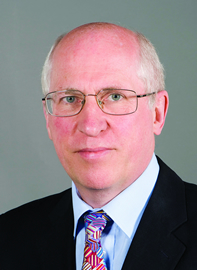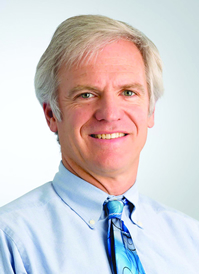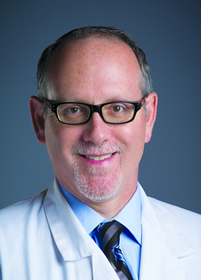Urate-lowering therapy is known to be an effective strategy for preventing gout attacks and could possibly reduce gout comorbidities, but studies indicate that, of those patients with indications for treatment, only a small subset receive urate-lowering therapy (ULT), such as allopurinol and febuxostat.

“The current treatment is far from optimal,” said Michael Doherty, FRCP, MA, MD, professor of rheumatology at the University of Nottingham in the United Kingdom. “Gout is the only curable chronic arthritis, so why is this curable condition just not being cured?”
Dr. Doherty will lead the clinical symposium Optimizing Care of Gout and Hyperuricemia with Personalized Medicine, on Tuesday afternoon. His talk will focus on strategies for expanding the use of ULT and will also discuss the growing prevalence of gout and its comorbidities. It’s the most common type of inflammatory arthritis, affecting about 4 percent of adults in the United States.
There has been a shift toward prescribing ULT at the first presentation of gout disease, along with NSAIDs or other medications to manage the acute attack, as the European League Against Rheumatism (EULAR) recently recommended.
“Current guidelines are taking the patient-centered perspective that ULT is at least discussed with patients even around the time when you first make the diagnosis rather than wait 10 years until they are really bad and their gout is causing them depression,” Dr. Doherty said.
Dr. Doherty will present results from a published proof-of-concept study showing that when patients receive full information about gout and its management options and are involved in treatment decisions (i.e., recommended best practice), 100 percent of patients wish to receive ULT, and after one year more than 9 out of 10 are adhering well to ULT and persist in achieving treatment targets for serum uric acid.
He will also present preliminary data from an ongoing two-year randomized controlled trial comparing nurse-led care and standard general practitioner care of gout patients. The former group, which received full, individualized education from nurses about their condition and care, had greater uptake of ULT and better management of pain and other gout symptoms.
“[In practice] hospital-based nurse practitioners could do this just like they do for rheumatoid arthritis, fully explain what it is and offer the drug treatments and monitor patients,” Dr. Doherty said.
But controversy remains among general practitioners and some rheumatologists about how best to use ULT. The ACR and EULAR recommend a treat-to-target (TTT) strategy, which involves adjusting the dose of ULT to achieve serum urate levels less than 6 mg/dL. But some doctors point out the lack of randomized clinical trials comparing TTT with other strategies, such as dosing ULT based solely on gout symptoms.

“I personally use the TTT strategy, and I think it is the best strategy, even though there is not direct clinical evidence to support that opinion,” said John FitzGerald, MD, PhD, Clinical Professor and Director of Rheumatology at University of California, Los Angeles Rheumatology at the David Geffen School of Medicine.
During the symposium, Dr. FitzGerald will discuss the findings of the recent systematic literature review on diagnosis of gout and gout management for the Agency for Healthcare Research and Quality and conducted by RAND. The American College of Physicians used the RAND review to develop their own guidelines on ULT and gout treatment strategies, which came out at the beginning of November and could affect how primary care doctors use ULT, said Dr. FitzGerald, one of the authors of the RAND systematic review.
Growing evidence linking high serum urate levels, even in the absence of gout symptoms, with hypertension, cardiovascular, and renal disease argues in favor of the TTT strategy.

“This is a relationship that may in fact be causal,” said Kenneth G. Saag, MD, MSC, the Jane Knight Lowe Professor of Medicine at the University of Alabama at Birmingham, Professor of Epidemiology at the UAB School of Public Health, and Director of the UAB Center of Research Translation in Gout and Hyperuricemia. “There is some debate about whether you get heart and kidney problems from urate elevation or once you have these problems you develop urate elevation, either as a result of the problems or as a result of the treatments that are offered, such as diuretic medicine for high blood pressure. Trying to disentangle the relationship between these things has proved challenging.”
Dr. Saag will talk about the evidence linking asymptomatic hyperuricemia with heart and kidney problems and also discuss ongoing studies to address whether ULT could help manage non-gout problems.
CLINICAL SCIENCE TRACK
Optimizing Care of Gout and Hyperuricemia with Personalized Medicine
2:30 – 4:00 pm Tuesday • Hall D
